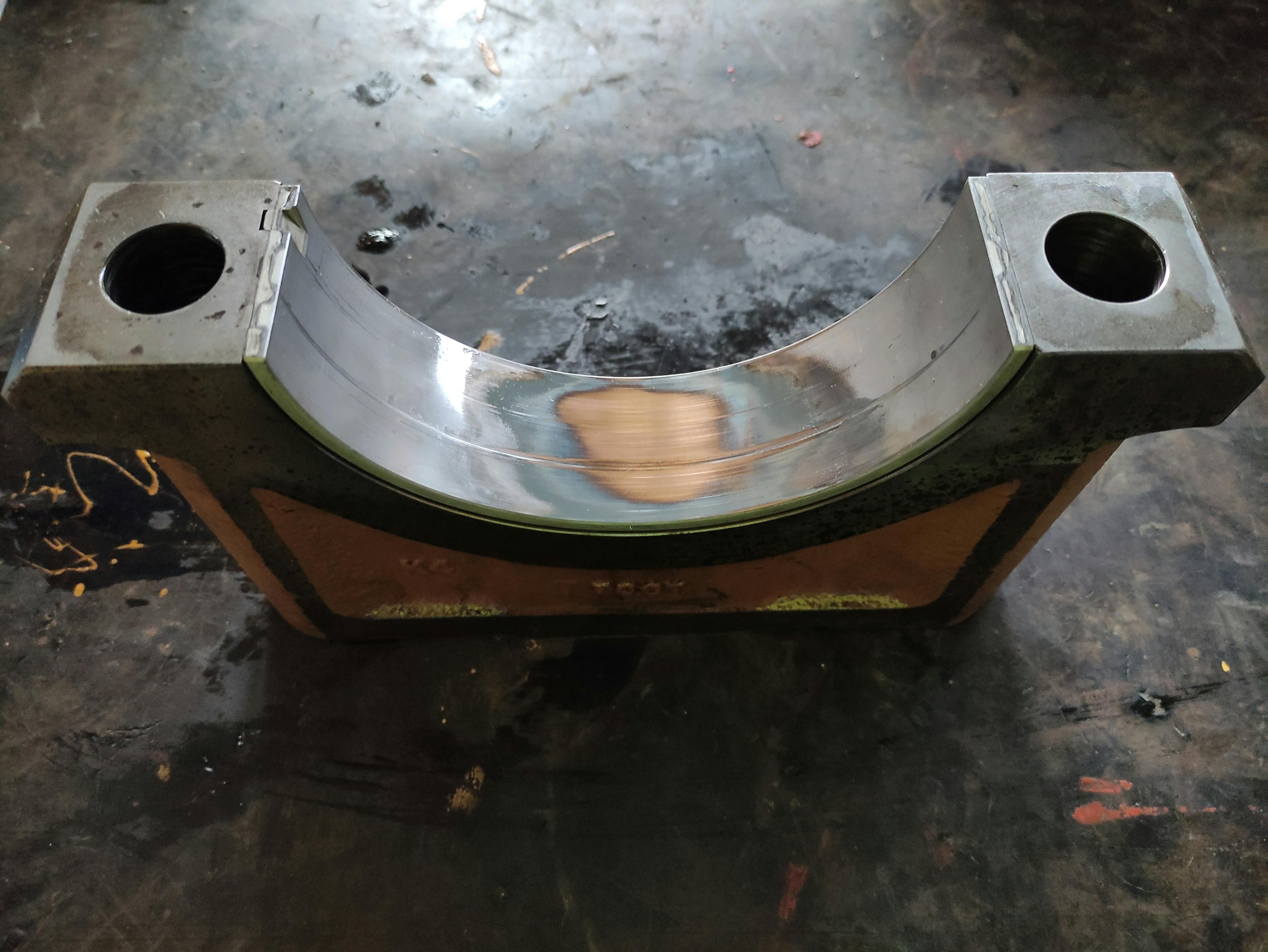What causes crankshaft main bearings to fail?

Since main bearings are not subjected to the shock loads that result from combustion events in the cylinders to the same degree that big-end bearings are, main bearings do not fail catastrophically as often as big-end bearings do.
Nonetheless, even though catastrophic failures of main bearings do occur, it is significantly more likely for main bearing inserts to fail before the actual main bearing journals fail or suffer significant damage. Consider the image above-
This image shows a main bearing cap with a worn bearing insert (indicated by the yellow arrow*), still in place. This example shows a case of extreme wear of the bearing insert, as shown by the fact that the wear extends through all the layers of the wear-resistant lining of the insert, down to the copper layer that bonds the wear-resistant metal lining to the steel backing plate of the insert.
* The red arrow in this image indicates a locking tab that prevents the bearing inserts from rotating inside the connecting rod.
This condition is usually (but not always) caused either by engine oil that contains solid contaminants such as sand, dirt, and sludge or by excessive loads of combustion products. In such cases, the solid contaminants form an extremely abrasive grinding paste that wears away the wear-resistant linings of the bearing inserts in fairly short order. Note that in most cases where dirty or degraded engine oil creates excessive clearances between bearing inserts and bearing journals, the large clearances cause such severe oil pressure losses that afflicted engines are often taken out of service before catastrophic damage can occur to the main bearing journals.
Note, though, that in cases where the oil supply to the main bearings is severely restricted or cut off completely, the main bearing inserts can become fused to the journals. This condition could cause irreparable damage to some or all of the main bearing journals- provided the crankshaft does not break into two or more pieces first.
